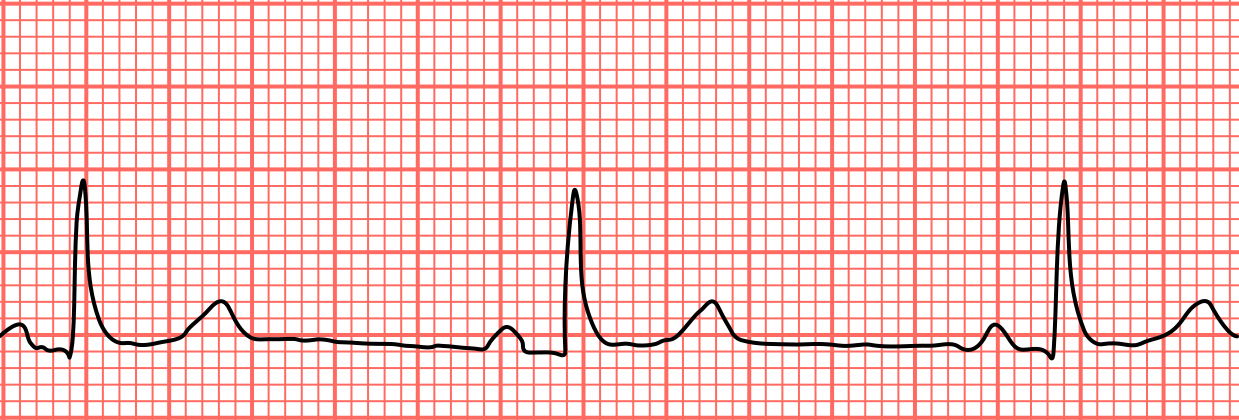This medication class is the recommended initial treatment for uncomplicated hypertension.
What are thiazide diuretics?
This lab value measures the additional stretch on the ventricles when a patient is in fluid overload.
What is BNP?
This intervention treats both peripheral artery disease and venous insufficiency.
What is exercise?
This is a common acronym used to assess chest pain.
What is OPQRST?
Onset, provocation/palliation, quality, region/radiation, severity, timing
This common clinical assessment or measurement is an indicator of target (end) organ perfusion in a patient with shock.
What is urine output?
This class of medications are commonly prescribed to treat hyperlipidemia.
What are HMG-CoA or statins?
This procedure requires the patient to be NPO for 4 hours prior and helps visualize heart function, valve function, and presence of thrombi.
What is a transesophageal echocardiogram (TEE)?
The medication often used to treat this rhythm:

What is atropine?
This blood test is measured and trended in patients complaining of chest pain as it is the most specific to cardiac injury.
What is high-sensitivity troponin?
This lab value with help guide ongoing fluid resuscitation of the patient in septic shock.
What is lactate?
The nurse knows that this is the primary difference between hypertensive urgency and hypertensive emergency.
What is target (or end) organ damage?
A patient diagnosed with heart failure starts taking lisinopril. This common adverse effect requires the patient to change positions slowly.
What is orthostatic hypotension?
Patients with this condition will be encouraged to wear compression stockings while awake.
What is chronic venous insufficiency or VI?
The nurse anticipates what initial interventions when the patient has this on their ECG:

What is morphine, oxygen, nitroglycerin, and aspirin?
The nurse recognizes that the patient with a spinal cord injury is at risk for this type of shock.
What is neurogenic shock?
Metabolic syndrome includes any three of the following defining characteristics: central obesity, elevated triglycerides, hypertension, decreased HDL, and what other characteristic?
What is elevated fasting glucose?
A patient is taking warfarin for an aortic mechanical heart valve. This is the target INR range for this patient.
What is 2.0 to 3.0?
Your patient has this rhythm, no pulse, and has not responded to epinephrine. What is the next medication you anticipate being ordered:

What is amiodarone?
A patient has crushing chest pain (10/10) that began at rest and radiates to his left shoulder and jaw. His ECG shows acute myocardial infarction involving the left anterior descending coronary artery. This is the preferred method to reopen (or reperfuse) that coronary artery.
What is percutaneous coronary intervention (PCI) such as angioplasty, stent placement, or atherectomy?
The nurse is caring for a patient with cardiac tamponade. The nurse knows to monitor closely for development of this type of shock.
What is obstructive shock?
These three types of medications require monitoring of heart rate prior to administration.
What are beta-blockers, calcium channel blockers, and cardiac glycosides?
These two classes of medications help decrease afterload and therefore decrease workload of the heart in a patient with heart failure.
What are ACE inhibitors and ARBs (Angiotensin Receptor Blockers)?
Besides epinephrine, which pharmacological treatment would be given to treat this rhythm?
What is magnesium?
Following a percutaneous coronary intervention (PCI), the nurse knows to assist the patient with ambulation the first time to ensure this potential complication is identified and managed early.
What is bleeding at the femoral puncture site?
Resuscitation goals for the patient in septic shock include these two assessment parameters.
What are MAP >/= 65 mmHg and UOP > 30 ml/hr?